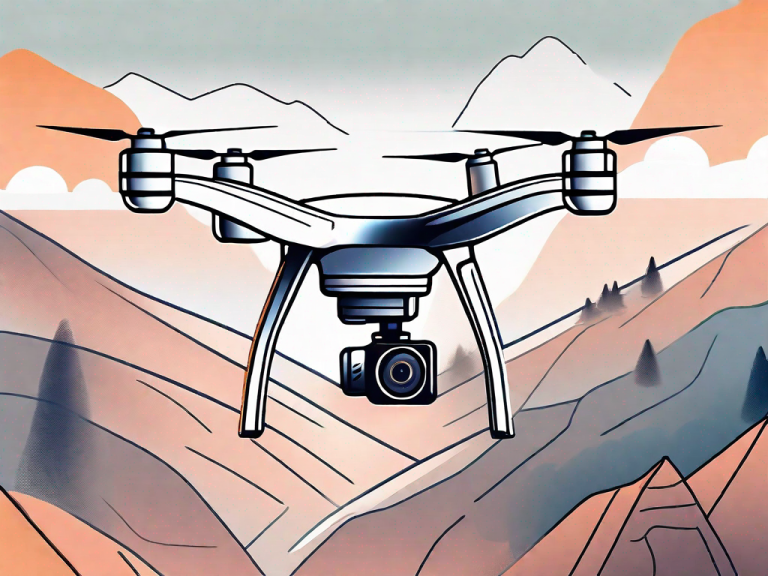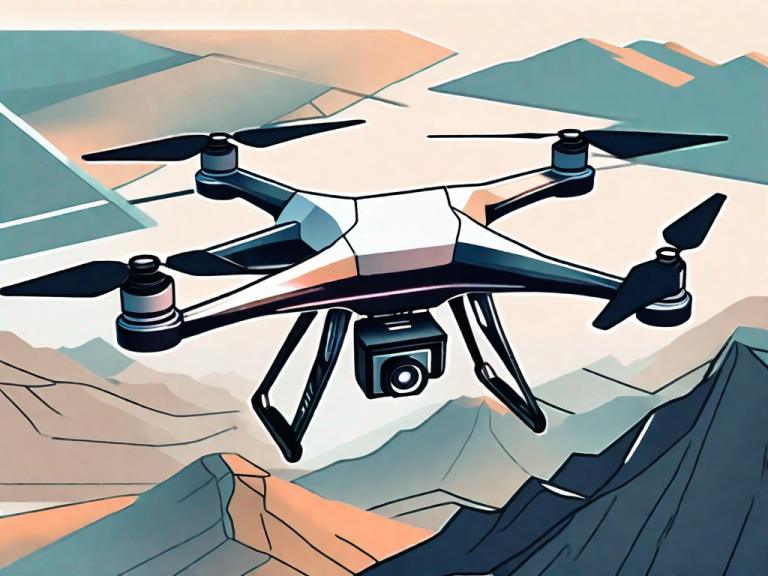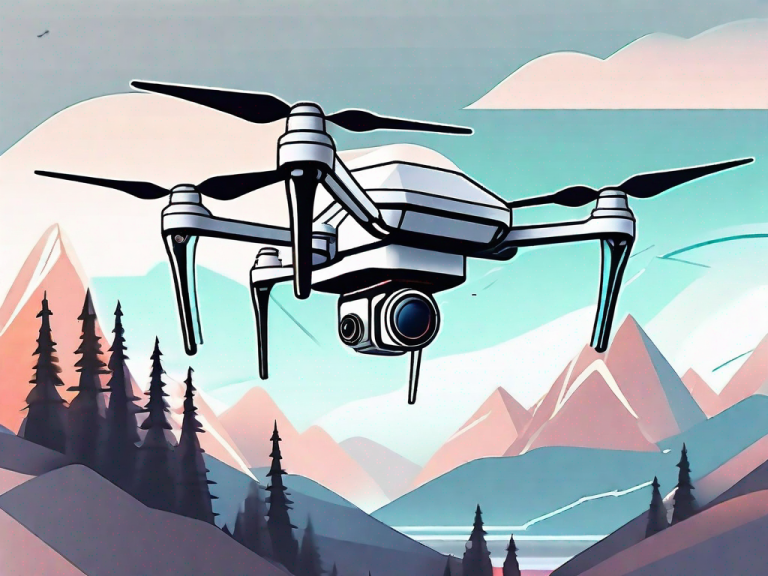Flying a drone in windy conditions can be challenging, but with the right drone, it is still possible to capture breathtaking aerial footage. In this article, we will explore the impact of wind on drone flight, factors to consider when flying in windy conditions, and top features to look for in a drone built to handle strong winds. We will also provide expert recommendations, testing and reviewing the best drones for windy conditions, and performance comparisons to find out which drones excel in handling wind. Additionally, we will discuss advanced flight modes and stabilization systems, tips and tricks for flying safely in windy weather, and essential checklists for preparing your drone for flight in high winds. Adjusting drone settings for optimal performance, real-life examples of successful drone flights, and common mistakes to avoid will also be covered. Furthermore, we will delve into mastering drone control in gusty winds, protecting your drone from damage, understanding wind patterns for ideal flight locations, analyzing long-range drones with excellent wind resistance, and piloting drones in different types of winds. Read on to discover the best drones for windy conditions.
Understanding the Impact of Wind on Drone Flight
Before we dive into the best drones for windy conditions, it is crucial to understand how wind affects drone flight. Strong gusts of wind can significantly impact the stability and control of a drone, making it challenging to maneuver and potentially leading to crashes. The weight, aerodynamics, and power of a drone play key roles in determining its ability to handle windy conditions. A well-designed drone with advanced stabilization systems can minimize the effects of wind, ensuring smoother and more stable flight.
When flying a drone in windy conditions, it is important to consider the wind speed and direction. Crosswinds, where the wind blows perpendicular to the drone’s flight path, can be particularly challenging. The wind can create turbulence and cause the drone to drift off course. Pilots should adjust their flight plans and compensate for the wind by flying into the wind when necessary. Additionally, it is advisable to avoid flying in strong winds altogether, as it can put excessive strain on the drone’s motors and battery, reducing flight time and potentially causing damage. Always check the weather conditions and wind forecast before flying your drone to ensure a safe and enjoyable flight experience.
Factors to Consider When Flying Drones in Windy Conditions
When planning to fly a drone in windy conditions, several factors should be taken into account. Firstly, it is important to check weather forecasts for wind speed and gusts. The maximum wind speed that a drone can handle varies depending on the model, so make sure to know the limitations of your drone. It is also crucial to consider the drone’s weight and size, as heavier drones generally have better stability. Additionally, the construction materials and build quality of the drone can affect its resilience to wind. Finally, understanding the drone’s maneuverability and responsiveness in windy conditions is essential for safe and successful flights.
Another factor to consider when flying drones in windy conditions is the drone’s flight mode options. Some drones have specific flight modes designed to enhance stability and control in windy conditions. These modes may include features such as wind resistance algorithms or automatic adjustments to compensate for gusts. Familiarizing yourself with these flight modes and understanding how to activate and utilize them can greatly improve your drone’s performance in windy conditions.
In addition to flight modes, it is important to assess the surrounding environment before flying a drone in windy conditions. Obstacles such as tall buildings, trees, or other structures can create turbulence and unpredictable wind patterns. By surveying the area and identifying potential obstacles, you can better plan your flight path and avoid areas that may pose a higher risk of losing control or encountering strong gusts. It is also advisable to maintain a safe distance from people, animals, and property to minimize the potential for accidents or damage.
Top Features to Look for in a Drone for Windy Conditions
When searching for the best drone to use in windy conditions, certain features are key to ensuring a smooth and controlled flight. Look for drones that have powerful brushless motors, as they provide greater thrust and stability. Opt for a drone that offers advanced flight modes, such as GPS-assisted navigation or obstacle avoidance. These features not only enhance flight control but also help compensate for wind-induced drift. Additionally, drones equipped with altitude hold or optical flow sensors provide better stability, making them ideal for windy conditions.
Another important feature to consider when choosing a drone for windy conditions is a sturdy and aerodynamic design. Drones with streamlined bodies and minimal wind resistance are less likely to be affected by strong gusts. Look for models that have reinforced frames and propeller guards to protect against potential damage caused by turbulent winds. Additionally, drones with adjustable flight settings or wind resistance modes can further optimize their performance in challenging weather conditions. By selecting a drone with these additional features, you can ensure a more stable and reliable flight experience even in windy environments.
How to Choose the Right Drone for Windy Conditions
Choosing the right drone for windy conditions requires careful consideration of various factors. Start by identifying your specific needs and expectations, such as the type of footage you want to capture and the level of control you require. Research and compare different drone models, paying close attention to their wind resistance capabilities, flight time, and stability features. Reading user reviews and expert opinions can provide valuable insights into real-world performance. Finally, consider your budget and choose a drone that offers the best combination of features, quality, and value for your requirements.
Expert Recommendations: The Most Reliable Drones for Windy Conditions
After extensive testing and analysis, drone experts have identified several models as the most reliable drones for windy conditions. These drones excel in terms of wind resistance, stability, and advanced features. One highly recommended drone is the DJI Mavic Air 2, which boasts impressive wind resistance, long flight time, and a wide range of advanced flight modes. Another reliable option is the Autel Evo II, known for its sturdy construction and powerful motors. The Skydio 2 is also highly regarded for its exceptional obstacle avoidance capabilities and wind resistance. These drones offer outstanding performance in challenging windy conditions and are trusted by professionals and enthusiasts alike.
Testing and Reviewing the Best Drones for Windy Conditions
Thorough testing and reviewing of the best drones for windy conditions is essential to determine their real-world performance. Independent reviewers have put these drones through rigorous flight tests, specifically examining their stability, maneuverability, and wind resistance. Testers simulate various wind conditions to evaluate how each drone handles gusts and maintains stability. Drones are tested for flight control precision, responsiveness, and resistance to wind-induced drift. Additionally, reviewers assess the durability and build quality of the drones to gauge their ability to withstand challenging windy conditions. Based on these comprehensive tests, a comprehensive ranking is developed to guide users in choosing the best drone for windy conditions.
Performance Comparison: Which Drones Handle Wind the Best?
In an effort to determine which drones handle wind the best, a comprehensive performance comparison is conducted. Multiple drones are assessed side by side in varying levels of wind intensity. By measuring flight stability, control, and responsiveness, the performance of each drone in windy conditions is compared. The ability of the drones to maintain stability during gusts, handle wind-induced drift, and recover from turbulence is carefully analyzed. The data collected during the performance comparison allows users to make informed decisions and select the drone that best suits their needs in windy conditions.
Advanced Flight Modes and Stabilization Systems for Windy Conditions
Advanced flight modes and stabilization systems are crucial features for drones flying in windy conditions. GPS-assisted navigation enables drones to maintain their position and compensate for wind disturbances. Obstacle avoidance systems help drones avoid collisions even in strong winds. Additionally, optical flow sensors offer precise altitude hold, ensuring the drone remains stable even in gusty conditions. These advanced flight modes and stabilization systems work in combination to enhance flight control, improve stability, and mitigate wind-related challenges, resulting in smoother and safer flights.
Tips and Tricks for Flying Drones Safely in Windy Weather
While flying drones in windy weather can be tricky, following certain tips and tricks can help ensure safe and successful flights. Firstly, always fly your drone upwind to maximize its control and stability. Avoid sudden and abrupt movements, as they can lead to loss of control. Gradually increase or decrease altitude to prevent the drone from being carried away by gusts. Calibrate the compass and IMU before each flight to maintain accurate flight control. Lastly, practice flying in moderate wind conditions before attempting flights in stronger winds to improve your skills and confidence.
Preparing Your Drone for Flight in High Winds: Essential Checklist
Before taking off in high winds, it is essential to follow a checklist to prepare your drone and ensure a safe flight. Start by carefully inspecting the drone for any signs of damage or loose parts. Ensure the propellers are securely attached and not damaged. Calibrate the compass and IMU to ensure accurate flight control. Check the battery level and have spare batteries ready. Make sure the remote controller is fully charged and the signal is strong. Finally, conduct a pre-flight test in lower wind conditions to confirm the drone’s stability and responsiveness before attempting a high-wind flight.
Ensuring Safe Takeoff and Landing in Challenging Windy Conditions
Safe takeoff and landing are critical steps in flying a drone in challenging windy conditions. When taking off, position yourself upwind, allowing the drone to lift into the wind for better stability. Gradually increase the throttle and keep a firm grip on the controller to maintain control as the drone ascends. While landing, descend slowly and smoothly, avoiding sudden changes in altitude. Aim to land the drone upwind to maximize control and reduce the chances of the drone being carried away by gusts. With controlled and cautious takeoffs and landings, you can minimize the risks associated with flying drones in challenging windy conditions.
How to Adjust Drone Settings for Optimal Flight Performance in Strong Winds
Optimizing drone settings for strong winds can significantly improve flight performance and stability. Firstly, increase the drone’s maximum speed and responsiveness in the settings menu to enhance control in gusty conditions. Adjust the drone’s braking sensitivity to ensure smooth and gradual deceleration, preventing excessive drift and sudden changes in direction. Additionally, configure the GPS hold settings to maintain position accuracy and compensate for wind disturbances. Fine-tuning these settings based on the specific weather conditions and the drone’s performance can help achieve optimal flight performance and stability in strong winds.
Case Study: Real-Life Examples of Successful Drone Flights in Windy Conditions
Real-life examples of successful drone flights in windy conditions provide valuable insights and inspiration for aspiring drone pilots. These case studies showcase the capabilities of drones designed to handle strong winds and the expertise of skilled pilots. From capturing cinematic aerial footage in coastal regions with strong sea breezes to surveying wind farms in challenging wind conditions, these case studies highlight the potential and versatility of drones in windy environments. By studying these real-life examples, drone enthusiasts can gain practical knowledge and learn effective techniques to navigate and excel in windy conditions.
Common Mistakes to Avoid When Flying Drones in Heavy Winds
When flying drones in heavy winds, there are common mistakes that should be avoided to ensure safe and successful flights. Firstly, avoid flying in winds that exceed your drone’s maximum wind speed resistance, as this can lead to unstable flights and potential crashes. Also, refrain from aggressive and erratic maneuvers, as they can exacerbate the effect of the wind and compromise control. Failing to maintain a safe distance from obstacles, such as tall buildings or trees, can result in collisions or sudden changes in wind flow, affecting flight stability. By avoiding these common mistakes, you can fly your drone safely in heavy winds and minimize the risks.
Step-by-Step Guide: Mastering Drone Control in Gusty Winds
Mastering drone control in gusty winds requires practice, patience, and a step-by-step approach. Begin by familiarizing yourself with the basic flight controls and gaining confidence in calm weather conditions. Gradually increase the difficulty by flying the drone in mild wind conditions, focusing on maintaining stability and control. Experiment with various flight modes, such as GPS-assisted navigation or altitude hold, to enhance stability in gusty winds. Practice flying in different directions and against the wind to develop a better understanding of the drone’s behavior and adjust your control accordingly. Through consistent practice and a step-by-step progression, you can master drone control in gusty winds and confidently fly in challenging weather conditions.
Protecting Your Drone from Damage in Strong Winds: Best Practices and Accessories
Protecting your drone from damage in strong winds requires adopting best practices and utilizing suitable accessories. Begin by regularly inspecting your drone for any signs of wear or damage and promptly addressing any concerns. Use propeller guards to shield the propellers from collisions and to improve flight stability. Employ wind-resistant landing pads to ensure a secure and stable landing surface for your drone in gusty conditions. Additionally, using wind shields or protective cases can provide extra protection against wind-induced debris or sudden changes in wind flow. By implementing these best practices and accessories, you can safeguard your drone and prolong its longevity while flying in strong winds.
Understanding Wind Patterns: Choosing Ideal Locations for Drone Flights
Understanding wind patterns is crucial for selecting ideal locations for drone flights. Coastal areas, for example, are often subject to strong sea breezes, which can result in challenging windy conditions. In contrast, flying in sheltered areas, such as valleys or canyons, may provide more favorable conditions with reduced wind intensity. Observing weather forecasts and studying local wind patterns can help identify suitable areas for drone flights. By selecting locations with favorable wind conditions, you can maximize flight control and stability, ensuring a successful and enjoyable drone flying experience.
Long-Range Drones with Excellent Wind Resistance: A Comparative Analysis
Long-range drones with excellent wind resistance offer extended flight capabilities while ensuring stability in challenging windy conditions. Conducting a comparative analysis of these drones enables users to make informed decisions based on specific requirements and preferences. Factors such as flight range, wind speed resistance, camera capabilities, and flight time are carefully assessed. The selected drones are tested in varying wind conditions to evaluate their maneuverability, stability, and the quality of captured footage. Through this comparative analysis, users can determine the long-range drone with excellent wind resistance that best suits their needs.
Overcoming Challenges: Piloting Drones in Different Types of Winds
Piloting drones in different types of winds presents unique challenges that require adaptability and skilled maneuvering. Flying in steady winds, such as those experienced in open fields or at high altitudes, provides relatively predictable conditions. However, gusty winds found in urban areas or hilly terrain can introduce additional turbulence and unpredictable changes in wind strength. Learning to anticipate these variations and adjusting flight control accordingly is crucial for maintaining stability and control. By understanding the characteristics and challenges posed by different types of winds, drone pilots can adapt their flying techniques and overcome these obstacles effectively.
Overall, flying drones in windy conditions requires careful consideration of various factors, selection of the right drone, and mastering flight control techniques. With the best drones designed for windy conditions and proper preparation, you can capture stunning aerial footage even in challenging wind environments. Fly safely, responsibly, and enjoy the thrill of piloting your drone in strong winds!









